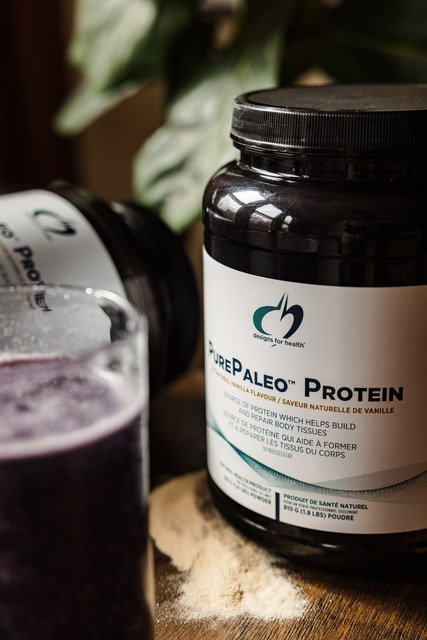Protein Powder
/I prefer to consume all of my macronutrients like fats, carbohydrates and protein through real food and I encourage others to do so as well. On the other hand, protein powder is a processed food made from real food and is helpful in certain situations. To obtain adequate protein intake requirements, there are times when it’s just easier to use protein powder, along with eating fish, poultry, red meat, or for vegans, legumes, nuts and seeds. Protein requirements are unique for each person and depend on biochemical individuality, overall health, and any health conditions a person may be experiencing.
Eggs and dairy products contain high amounts of protein also, however, for many people, the intolerance or hypersensitivity to these foods is high and in general, these foods are not the best sources of protein for many people. Yet for others, these foods are just fine and provide adequate protein nutrition, like for vegetarians who do not eat flesh foods but also do not consume a vegan diet and can tolerate eggs and/or dairy products.
There are those with blood sugar dysregulation who require higher protein sources with each meal. We know that proper blood sugar regulation is important for great brain health, metabolic health and for energy and vitality. There are those who require the building of tissues and muscles for great musculoskeletal health where a higher protein diet is beneficial. Some people who have illnesses with tissue and muscle wasting also benefit from extra protein as found in an easily assimilable form like protein powder.
For those who eat fish and meat, the best protein powder by far that I have ever recommended in practice is PurePaleo Protein from Designs For Health. The source is concentrate beef protein from grass-fed beef, non-GMO Swedish cows that contain no hormones. It is much better than whey protein powder (made from dairy) because it is more easily digestible and allows the protein to be hydrolyzed into more peptides resulting in easier absorption and assimilation. The flavours it comes in are chocolate, vanilla, and un-flavoured which is the version containing no stevia. This powder provides a whopping 27 gm per serving.
When thinking of drinking protein powder made from beef, your first thought might be, “yuk, I’m not putting that into my smoothie”. It doesn’t taste like beef at all. Actually, PurePaleo Protein tastes great and you can blend it with other ingredients in a smoothie or use it in a shaker cup with liquids at room temperature. Drink it as soon as you make it and don’t leave it in the fridge for later because then it would be, “yuk”.
Almost every patient I have ever prescribed this to loves the taste. Whey protein powder also tastes really good, however, as mentioned, those with dairy intolerances or hypersensitivities won’t do well with this type of protein powder. For vegans, there are other types of protein powders that can be used like rice, rice and pea, pea, hemp or soy. These powders will never contain as much protein as beef or whey protein powders, and typically don’t taste as good, but do meet the criteria if you are aiming for an only plant-based diet.
I like using Designs For Health products for myself and in my practice because the quality is exceptional, the nutraceuticals work well, and the research behind their supplements is good.
Designs For Health also makes other powders that I frequently recommend in practice that I find quite valuable. I use Whole Body Collagen for joint health as well as for hair loss due to telogen effluvium. I used it consistently for 6 months myself when my thick beautiful hair started coming out in massive amounts during a stressful period in my life. I joked that I every time I brushed my hair I could make an entire wig out of it. The Whole Body Collagen along with Hair/Skin/Nails Ultra by Pure Encapsulations helped me stop losing hair and actually improved the health of my hair.
From Designs For Health I also used Arthroben for osteoarthritis of the joints and Electrolyte Synergy for exercise recovery and for athlete’s in training.
Powders are an easy way to get concentrated nutrients when this is required. However, when the need is not high, and you have time to create balanced meals chuck full of high quality nutrients, then real food is always the best way to go.




